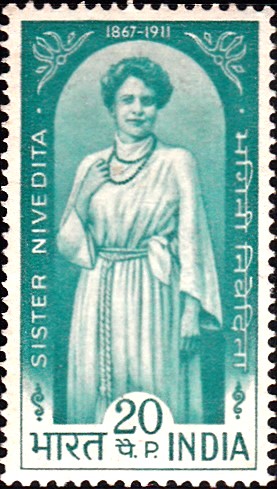
Sister Nivedita
A commemorative postage stamp on Bhagini Nibedita (Margaret Noble), an Irish teacher, author, social activist and disciple of Swami Vivekananda, founder of Ramakrishna Sarada Mission Sister Nivedita Girls’ School :
 Issued by India
Issued by India
Issued on Oct 27, 1968
Issued for : A grateful nation is celebrating Sister Nivedita‘s Centenary year; and the P. & T. Department counts it a privilege to mark the occasion by bringing out a commemorative stamp in her honour.
Description of Design : The design of the stamp is vertical and depicts a portrait of Sister Nivedita. The year of birth and death, viz., 1867-1911 appear on the top. The name in English and Hindi ‘SISTER NIVEDITA‘ appear along the left and right border of the stamp. Denomination and INDIA appear at the bottom of the Stamp design.
Type : Stamp, Mint Condition
Colour : Jade Green
Denomination : 20 Paise
Overall Size : 4.06 X 2.28 cms.
Printing Size : 3.80 X 2.0 cms.
Perforation : 14½ x 14
Watermark : Printed on unwatermarked paper
Number Printed : 20,00,000
Number per issue Sheet : 50
Printing Process : Photogravure
Designed and Printed at : India Security Press
Name : Margaret Elizabeth Noble
Born on Oct 28, 1867 at County Tyrone, United Kingdom
Died on Oct 13, 1911 at Darjeeling, West Bengal, India
About :
- Margaret Noble, known and loved in India as Sister Nivedita, was born on 28th October, 1867, in a small town in Northern Ireland. She met Swami Vivekananda in London in 1895. That was the turning point of her life. That great man of religion kindled in her a yearning for India and its ancient spirituality. The call of the East bore fruit for Margaret Noble in January, 1898 when she arrived in India.
- She was associated closely with Swami Vivekananda and the Ramakrishna Mission. She was mainly engaged during this time in running a school for girls and young women at Bagh Bazar in Calcutta. She also drank deep in the lore of ancient India. She was particularly drawn to godhead as the Divine Mother, an unmistakable influence of her guru, Swami Vivekananda. She adopted Indian customs and habits and become imbued with the real spirit of India. India became her adopted home, and not only in the religious sense.
- After the death of Swami Vivekananda in July, 1902, she was not as closely associated with the Ramakrishna Mission, although her veneration for her late preceptor remained unabated. Her fiery spirit was no longer willing to be confined to her cloistered home at Bagh Bazar. The political turmoil of the day could not but affect her. She attended the Banaras session of the Congress in 1935. Her writings and speeches attracted wide notice. She even became friendly with the Indian revolutionaries. Her passion for justice was such that her sympathies always lay with those fighting for a cause, in whatever manner the fight was carried on. Her activities drew the attention of the British Raj which she had to elude for a time under an assumed name. Her tempestuous career apparently told upon her health and she passed away in October, 1911, at the early age of forty-four.
- Hers was a versatile genius. She counted among her friends and associates such diverse personalities as Gokhale, Sri Aurobindo, Rabindranath Tagore, Jagdish Chandra Bose and the artist Nandalal Bose. True to her name of Nivedita which Swami Vivekananda had bestowed upon her, she was indeed the dedicated one and she played her full part in the spiritual and political regeneration of India.



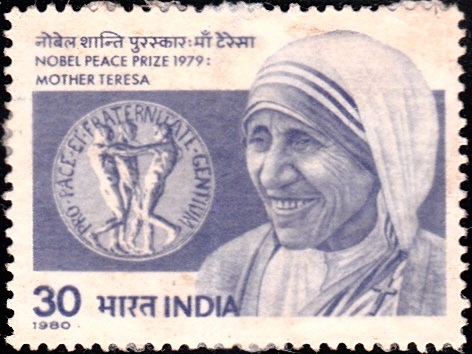
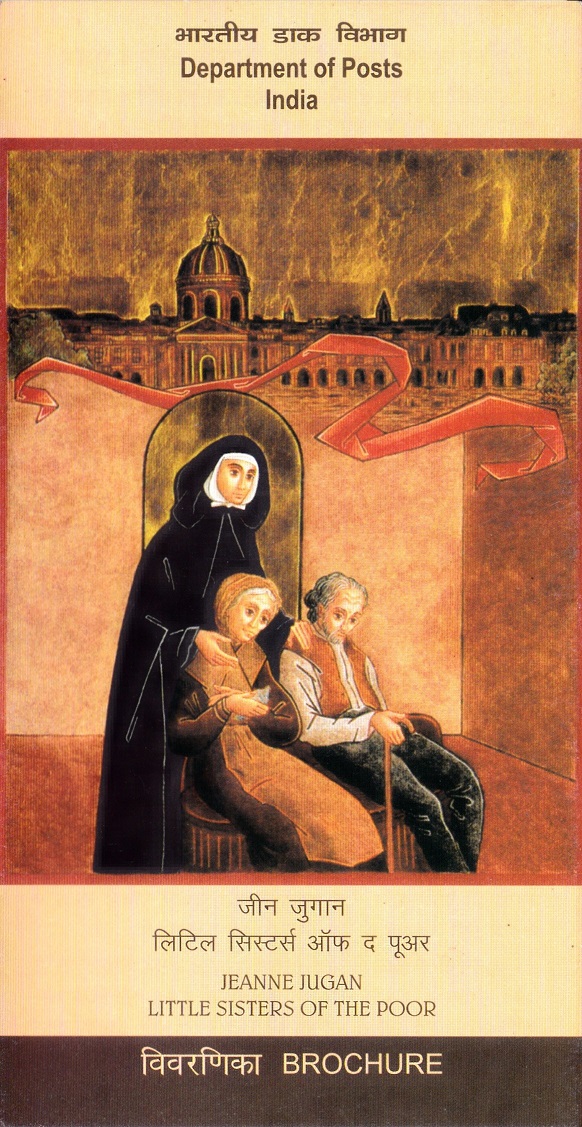
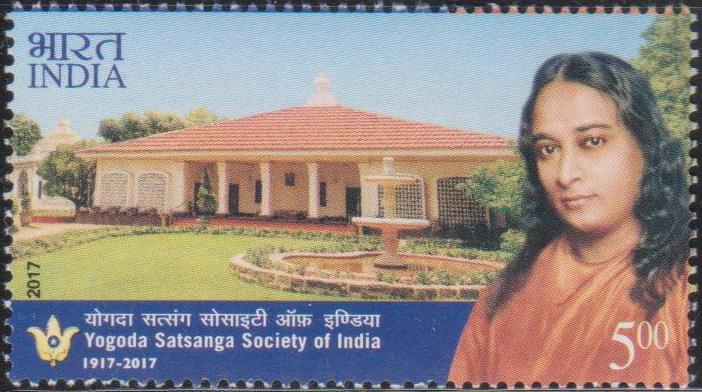
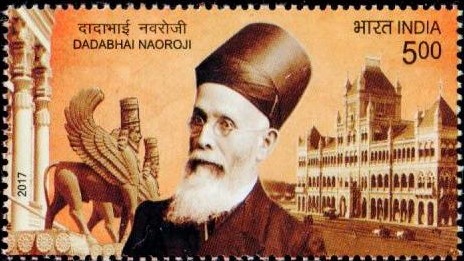
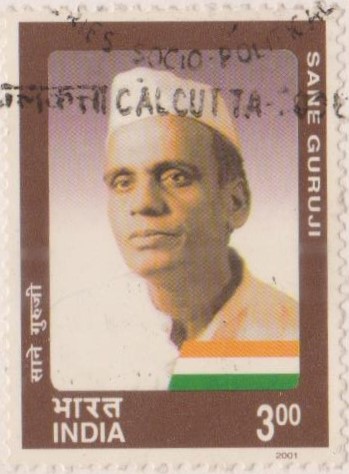
[…] Sankaracharya popularised Sanskrit by singing and writing it in a simple way as praised by Sister Nivedita in the following words, “to have written poems whose grandeur makes him unmistakable even to […]
[…] the freedom struggle of India. The first Indian flag came into being in 1905. It was made by Sister Nivedita, an Irish disciple of Swami Vivekananda. The words Vande Mataram in Bengali script were written on […]
[…] at Jorasanko offered by Abanindranath Tagore where he came into contact with Ananda Coomaraswami, Sister Nivedita, Okakura and Rabindranath Tagore whose literary manifestations he enjoyed illustrating for years to […]